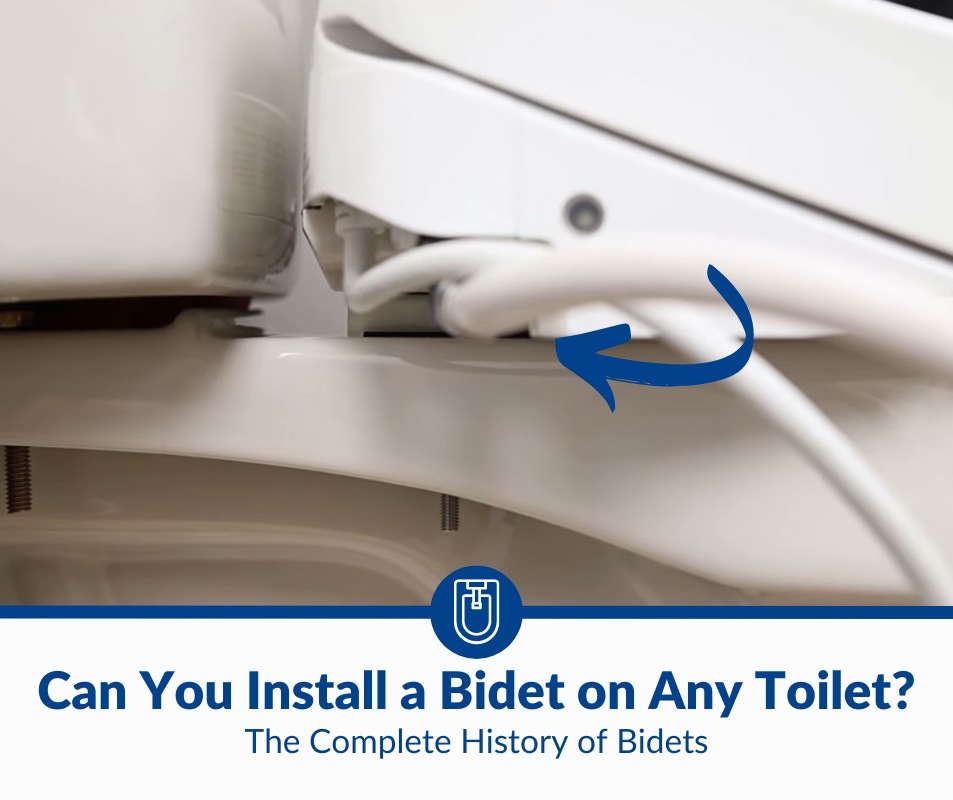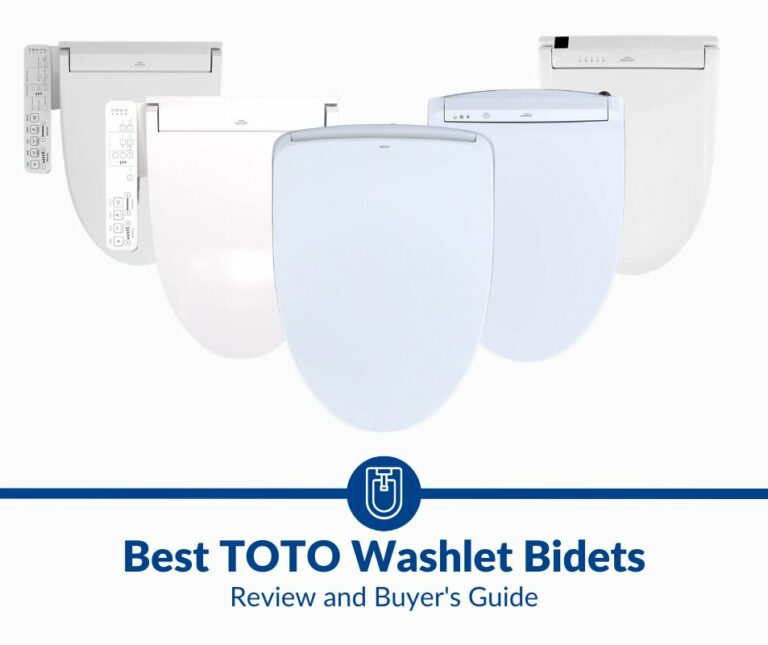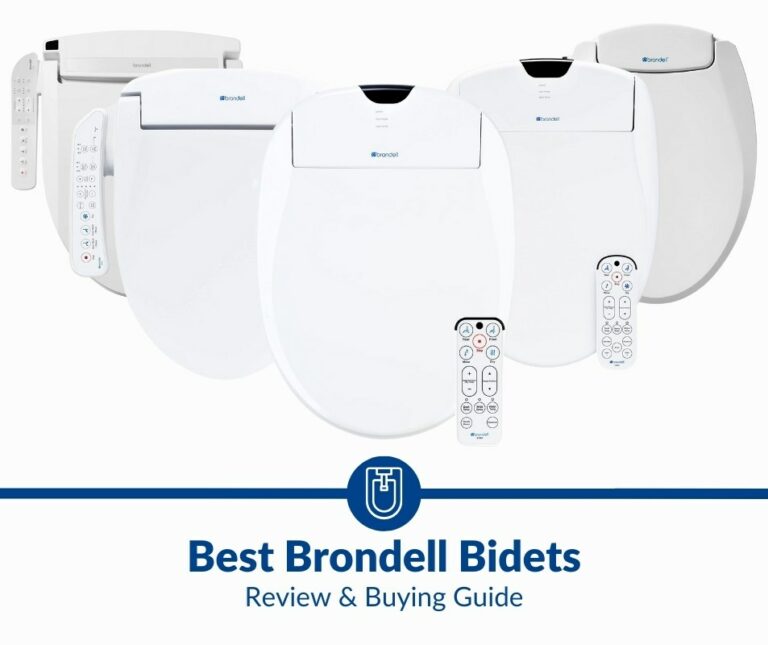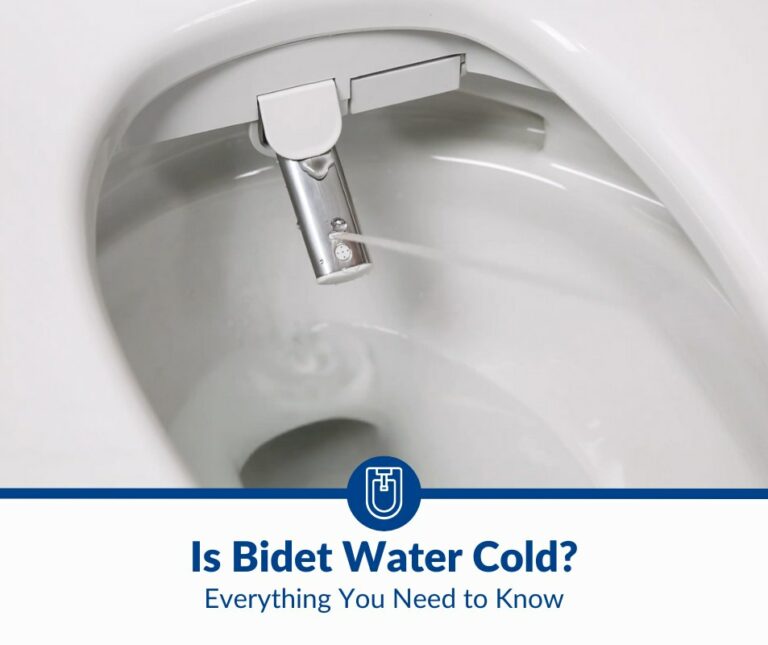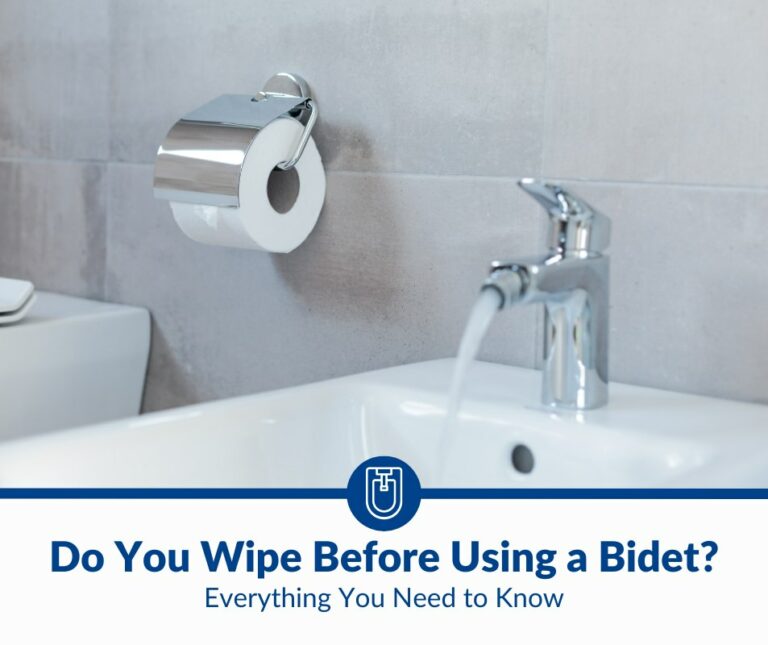Can You Install a Bidet on Any Toilet?
The original bidet is a freestanding or standalone bowl containing water to clean one’s anterior and posterior. Modern bidets that were first designed and patented by Arnold Lewis Cohen are installed on regular toilets. But toilets aren’t identical, so, can you install a bidet on any toilet?
You can install a bidet on any standard toilet except the composting and waterless flush systems. A bidet toilet seat, attachment, or handheld sprayer is a turnkey installation for regular toilets, but concealed fittings or tanks and tankless systems aren’t bidet-ready.
Most bidet manufacturers make their seats, attachments, or hand sprayers compatible with the standard sizes and types of toilets, be it the bowl, seat, or tank. However, some toilet designs, installations, and mechanisms aren’t bidet-friendly or ready. Keep reading to know more.
What Toilets Are Best for Bidets?
Modern bidets and toilets have myriad distinguishing features, but a few essential attributes are somewhat standardized, or the variations are nominal, such as the following:
- Dimensions
- Fittings’ sizes
- Mechanisms
- Overall shapes
Aesthetic design elements don’t necessarily make a toilet less or more bidet-friendly than other styles unless the features significantly alter any of the above four attributes. Also, any bidet you choose and its specific characteristics should be a compatible fit for the toilet you have.
With these variables in mind, here are the toilets that are best for bidets.
One-Piece and Two-Piece Toilets
Most residential toilets have a one-piece or two-piece configuration. Both configurations have a tank or cistern.
A one-piece configuration has an integrated tank, whereas the two-piece style has a detached cistern. Neither poses a hurdle for a bidet toilet seat if you get the right shape.
As long as you can access the hose connecting the water supply shut-off valve and the tank’s shank, you can install a bidet. But there are a few exceptions, such as the French curve toilet. A one-piece French curve toilet usually features a tank with a concave and sloped design.
The face or front of the tank is curved inward and slopes down toward the toilet bowl. Several standard bidet toilet seats or attachments are unlikely to fit the French curve one-piece design. You must get a bidet seat or attachment that is specifically designed for French curve toilets.
However, you can use a standard bidet hand sprayer for a one-piece French curve toilet, as it is an external attachment. Bidet hand sprayers don’t interact with a toilet bowl or seat, so a unique design element or dimension doesn’t create a compatibility issue.
The other issues some people may encounter with a one-piece toilet, whether French curve or otherwise, pertain to accessing the bolt holes and the tank’s inlet. Some one-piece designs have concealed mounting bolts. These designs will likely need top mount bolts. Such top mount bolts may also be necessary for two-piece toilets with a skirt restricting access to under the bowl.
Limited access to a tank’s fill valve or inlet shank may be manageable for most one-piece toilets. If you can’t reach it, you can connect a bidet to the water supply line for the toilet. The T-adapter or 3-way connector of the bidet will be at the shut-off valve instead of the inlet for the tank.
Types of Bidets Compatible With One-Piece and Two-Piece Toilets
A regular one-piece or two-piece toilet with a typical hose running from the water shut-off valve to the tank is compatible with all types of bidets, such as:
- Bidet toilet seat
- Bidet attachment
- Bidet hand sprayer
Bidet Toilet Seats Replace the Seat You Have Now
Consider the bestselling GenieBidet Elongated Seat (available on Amazon.com). This bidet toilet seat with two self-cleaning nozzles is compatible with one-piece and two-piece toilets. There’s no wiring involved, and this kit comes with a T-connector that you hook to the water inlet hose of the toilet’s tank.
The entire installation process takes a few minutes if you are deft at working with bolts, screws, and valves. However, the GenieBidet seat isn’t compatible with French curve toilets. You should get something like the American Standard Aqua Wash Non-Electric Bidet Seat (available on Amazon.com).
This American Standard non-electric bidet seat for elongated bowls fits many one-piece French curve toilets, like the Project Source Laporte Dual Flush. But the Aqua Wash bidet seat may not fit a Kohler San Martine. You will probably need the Kohler C3 230 Bidet Toilet Seat (available on Amazon.com).
If you get electric bidet toilet seats, like this SmartBidet SB-2400ER (available on Amazon.com) for elongated bowls and French curve designs, you will have additional installation requirements, such as the electrical connections for the following features:
- Heated seat
- LED night light
- Remote control
The same applies to BidetMate’s 2000 Series Smart Toilet Seat (available on Amazon.com) with the following features:
- Deodorizer
- Heated seat
- Heated water
- Warm air dryer
The 2000 Series has smart bidet seats for both elongated and round toilet bowls.
Bidet Attachments Sit Under a Standard Toilet Seat
A bidet attachment for a one-piece or two-piece toilet with an elongated or round bowl is a more affordable option. You can continue to use the toilet seat you have now. Also, some attachments have plates that you can adjust to perfectly align with the toilet bowl’s bolt or mounting holes.
One example is the Luxe Bidet Neo 120 (available on Amazon.com). You can install this non-electric bidet toilet attachment in fewer than 5 minutes on most two-piece toilets with elongated bowls. One-piece toilets aren’t necessarily a problem if the alignment or spacing of key components varies to some extent.
For instance, the space between a mounting screw and the edge of the toilet bowl can be 1.25 inches to 3.5 inches (3.17 cm to 8.89 cm). And the distance between the two mounting screws can be 3.5 inches to 8.25 inches (8.89 cm to ~21 cm).
However, the Luxe Bidet Neo 120 may not fit all one-piece French curve toilets. Another typical problem with the Neo 120 is the seat doesn’t sit flush when you close it. The standard seat will be flush when you use it, but it might be slightly raised otherwise due to the bidet attachment.
You can avert this problem and have a standard toilet seat sit flush on the bowl with the Veken Ultra-Slim Bidet Attachment (available on Amazon.com). The bidet attachment with a brass inlet and two nozzles isn’t thick enough to prevent standard seats from sitting flush on the typical toilet bowls.
Bidet Hand Sprayers as External Toilet Attachments
Bidet hand sprayers are mounted externally, so the sizes and other design features of a toilet bowl or its seat don’t have any influence. You may mount a bidet hand sprayer on the tank or the wall. Some tanks with special designs may not be turnkey installations for the mount.
The water inlet hose can be connected in the same way you should set up a bidet toilet seat or attachment. Consider the example of the Purrfectzone Bidet Handheld Sprayer (available on Amazon.com), which has all the essentials you need for a simple and swift installation, including the following:
- Sprayer holder
- T-valve adapter
- Anchors
- Screws
- Washers
- Plumber tape
The stainless steel braided sprayer hose is built to last. Like Purrfectzone, the Arofa Handheld Bidet Sprayer (available on Amazon.com) is compatible with both one-piece and two-piece toilets. The Arofa kit also has the essentials you need for a turnkey installation. Simply hook it to the toilet tank.
Elongated and Round Toilet Bowls
Generally, toilets have an elongated or round bowl. You should choose a round or elongated bidet toilet seat for the shape you have. If you want to use a bidet attachment with the current seat, you don’t have to worry about the bowl shape. But the design shouldn’t be incompatible.
Both elongated and round toilet bowls can have two standard bolt holes that are 5.5 inches (13.97 cm) apart. So, a typical bidet attachment can be mounted using the bolt holes, and you can continue using the same seat you have now unless there are spacing issues.
Suppose you have an elongated or round toilet bowl with an unusual seat. Not every bidet toilet attachment will seamlessly fit under such a seat. Likewise, a toilet with an unusually large space between the bolt or screw holes and the outer edge of the bowl may pose a compatibility issue.
A typical bidet attachment may not fit if the space between the two bolt holes and the edge of the seat or the outer rim of the toilet bowl is too large. The same issue might make some bidet toilet seats incompatible with your bowl, whether it is elongated or round.
Such compatibility problems boil down to the exact dimensions of a toilet and a bidet, whether seats or attachments. But you can get bidet attachments with adjustable plates so that these issues don’t arise. Bidet hand sprayers don’t have these compatibility problems.
Types of Bidets Compatible With Elongated or Round Toilet Bowls
Bidet hand sprayers are external attachments mounted on the tank or wall. Hence, you can use any type of bidet hand sprayer regardless of the shape of the toilet bowl as long as the tank and the water supply line don’t present a challenge.
If you intend to use a bidet toilet seat, always match it to be the same shape as the bowl you have. Most brands have elongated and round variants of the same series and models, such as the Brondell Swash Bidet Toilet Seat (available on Amazon.com).
The S101 style is for elongated bowls, whereas the S102 is a round bidet toilet seat. Both these styles have the following features:
- Full but slim seat
- Dual nozzle system
- Chrome control dial
The GenieBidet toilet seats I discussed above also have elongated and round variants for the same models, with other features being identical. Furthermore, GenieBidet has stealth variants for both GenieBidet Elongated Toilet Seat (available on Amazon.com) and GenieBidet Round Toilet Seat (available on Amazon.com). These styles feature a discreet bidet design.
If you want to confirm the size and shape of your toilet bowl, measure the linear distance from the center of the bolt holes at the back to the front edge. Standard round bowls measure around 16 to 18 inches (40.64 to 45.72 cm). Elongated bowls are 18 to 20 inches (45.72 to 50.8 cm).
Neither bowl shape is likely to be a problem if you have a two-piece toilet. For one-piece toilets, you may need to measure the distance between the center of the bolt holes and the rear edge of the bowl, where it meets the integrated tank.
This gap should be at least 2 inches (5.08 cm) for both elongated and round GenieBidet seats, which is fundamentally why many French curve toilets aren’t readily compatible. Similar issues apply to bidet attachments that are mounted under the seat of either elongated or round bowls.
Let me use the example of the Veken Ultra-Slim Bidet Attachment that I mentioned above. This type of attachment doesn’t span the bowl, whether elongated or round. Only the mounting area comprising the bolt or screw holes and the distance to the edges at the rear must be suitable.
Here are the requirements:
- The lateral space between the center of the mounting holes on the toilet bowl to the edge on either side should be up to 7.87 inches (~20 cm).
- The space between the two screw holes can be between 4.33 inches and 8.66 inches (~11 cm and ~22 cm).
- The space between the screw holes and the front base of the tank or the rear edge of the bowl for a one-piece or two-piece toilet should be at least 1.18 inches (~3 cm).
- The lateral distance from either mounting screw hole to the edge on its side can range from 1.97 inches to 3.54 inches (5 cm to 9 cm).
- The center of the mounting screw holes on the toilet bowl should be at least 11.8 inches (30 cm) from the wall on the side where you will have the bidet controls.
These ranges offer sufficient room for variations in the dimensions or sizes of standard toilets. Also, most of the spacing requirements of bidet attachments, not seats, pertain to the rear end of the toilet bowl rather than the elongated or round form toward the front.
Low, Standard, and Chair Height
Most toilets can be classified into the following categories according to their heights:
- Low level: ~12 inches to ~14 inches (30 cm to 35 cm)
- Standard: 15 inches or 16 inches (38 cm or 40 cm)
- Chair (ADA): 17 inches to 19 inches (43 cm to 48 cm)
Height, which is the linear distance from the toilet floor to the top of the seat, is a crucial factor, especially for ADA compliance and convenience for people with disabilities. But height doesn’t singularly make a toilet less or more bidet-friendly. Bidets don’t have anything to do with heights.
A toilet with any of these three heights can have a one-piece or two-piece configuration with an elongated or rounded bowl. So, you can install a bidet on a low, standard, or chair-height toilet, but the other decisive and influencing factors shouldn’t make the two fixtures incompatible.
Every Toilet Isn’t Bidet-Ready
Most bidets are designed to be a turnkey solution for your toilet. You don’t have to invest much effort or time to install one unless a toilet isn’t bidet-ready, such as the following:
- Back-to-wall toilet: the tank may be concealed or recessed into the wall
- Wall-hung toilet: the tank is most likely built into the wall, or it is tankless
- High-level toilet: the tank’s height is beyond the length of the bidet hose
- Tankless toilet: back-to-wall, wall-hung, or standalone without a tank
These toilets aren’t convenient or ready for any type of bidet, such as:
- Bidet toilet seat
- Bidet attachment
- Bidet hand sprayer
You need an easy and somewhat short connection to a water inlet source to install a bidet on a toilet. Concealed tanks or tankless systems don’t have a readily accessible water inlet hose that is found on all regular toilets. Hence, you can’t connect the bidet to a water source conveniently.
A similar problem is likely for high-level toilets, albeit these types aren’t as common. If a tank is mounted on the wall at a height that is greater than the length of the hose you get with the bidet, you will need another longer piece to install the seat, attachment, or hand sprayer.
In the absence of a water supply line or shut-off valve behind or next to the toilet, you will need a larger hose to connect to the inlet for the sink or washbasin. However, such lines are generally a bit smaller in diameter than the pipes or hoses used for toilet tanks and water closets.
Bidet adapters, connectors, or valves usually have 7/8-inch or 15/16-inch (22.22 mm or 23.81 mm) inlets and a 1/2-inch (12.7 mm) outlet connected to the water jet. A sink or washbasin’s inlet hose may be 1/2-inch (12.7 mm), so you will have to get another adapter or T-connector.
Furthermore, tankless and wall-hung toilets may not have the same shape, size, or style as the standard types. Some wall-hung toilets are neither elongated nor round. A tankless toilet may use a flushometer valve or other mechanism, which might complicate the installation.
Otherwise, flush mechanisms per se don’t usually influence the compatibility of bidets. You can use any type of bidet with the following systems:
- Gravity flush (single or dual)
- Pressure-assisted flush
- Double cyclone flush
There are, of course, ways to overcome the hurdles posed by toilets or their plumbing and tank systems that are not bidet-ready. You have to basically get a convenient water inlet source for a bidet to expedite and simplify the installation process. Else, you need a plumber or handyman.
The only other type of toilet that may not be immediately bidet-ready is an upflush system. Most upflush toilets are compatible with all types of bidets. But some setups may be an issue if there is a lot of drainage from multiple fixtures to a single macerator pump with a limited capacity.
That said, up flush toilets aren’t that common in American households. And macerator pumps don’t always have showers and sinks draining gray water into the system, so the capacity issue or the risk of a toilet backing up may not be a concern.
Toilets Not Suitable for Bidets
Dry sanitation or waterless toilets aren’t bidet-friendly or ready. Composting toilets don’t have a typical flush system, so there is no way you can use any type of bidet. Even if you have a water supply line nearby for a bidet, composting or waterless toilets can’t process a lot of blackwater.
Conclusion
You can install a bidet on most standard toilets. Choose an elongated or round bidet seat for the shape of your toilet bowl. Select a bidet attachment as per the dimensions of your toilet bowl or seat, especially for one-piece toilets, including the French curve styles.
Bidet hand sprayers are easy to install unless there’s no water line nearby. Tankless toilets and wall-hung models with a concealed tank will complicate the installation of all bidets. The only toilets that are incompatible with bidets are dry flush, composting, and waterless systems.

